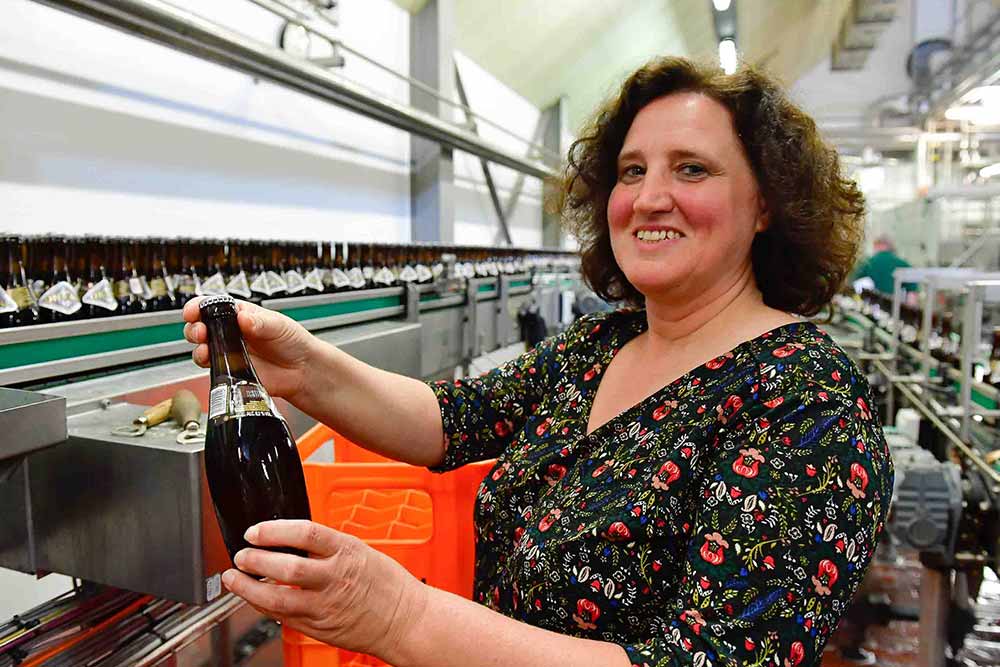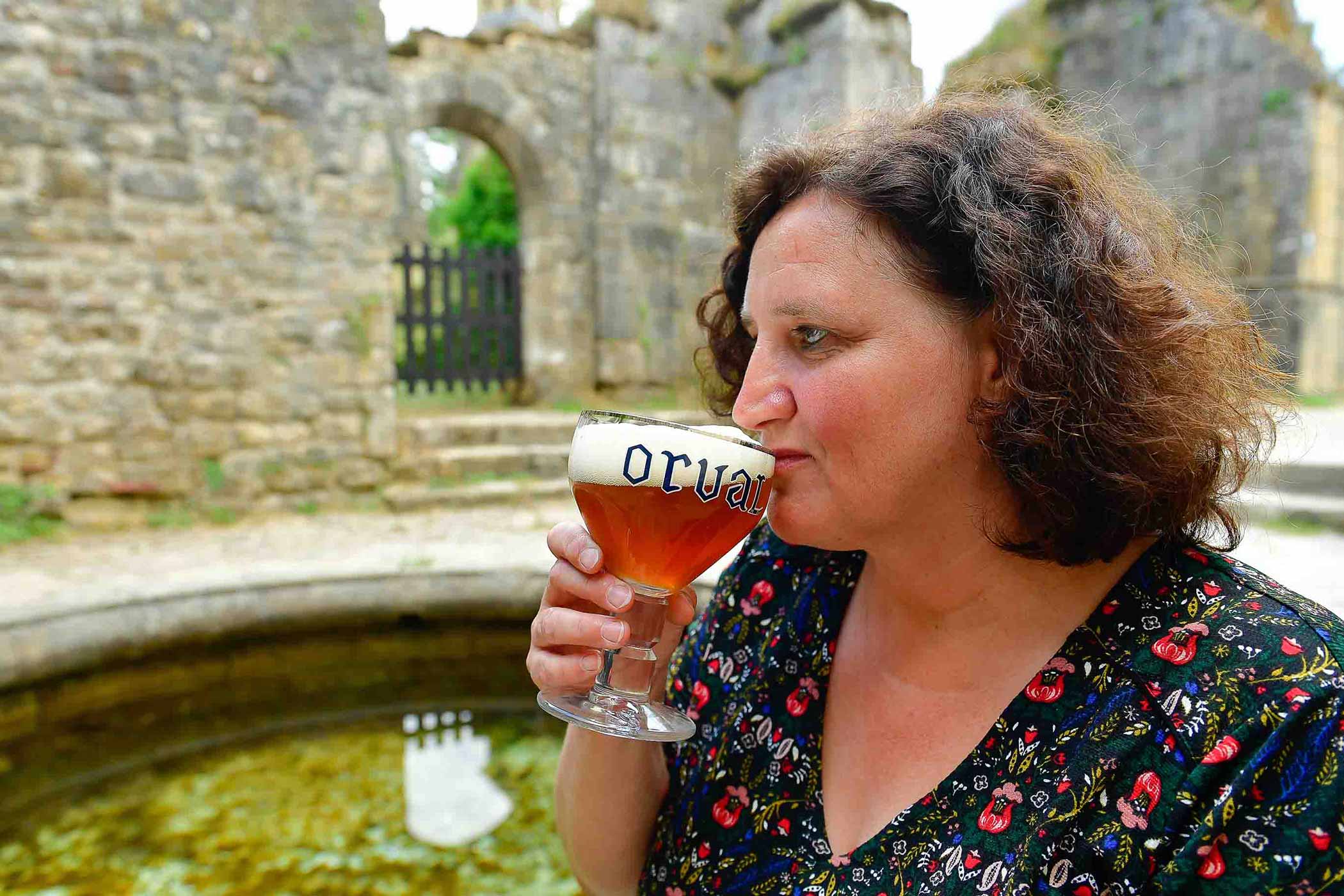Shop
Meet Orval’s Anne-Françoise Pypaert, the First Female Trappist Brewmaster
One trout, one ring, one beer, two women.
Looking For More on Belgium?
Best Breweries and Bars to Visit in Belgium
Brasserie de la Senne: The People’s Brewery of Belgium
Editor’s Note: During the end of September and beginning of October 2023, I had the fantastic opportunity to travel to Belgium on a beer trip hosted by Bruz Beers and Purpose Brewing. For ten days, we bussed around Belgium, visiting countless breweries and pubs, meeting legendary brewmasters, trying beer from centuries-old breweries, and learning about Belgian beer culture. This article is part of a series sharing some incredible stories from my travels.
If you want to join this trip next year, stay tuned to Bruz’s events page here!
Legend has it that Abbaye d’Orval started with one woman. As the story goes, Countess Matilde of Tuscany, freshly widowed and grieving, stopped by a fountain to cry. Her wedding ring accidentally fell off as she leaned over the water, plunging to the depths below. She prayed for its return, and as she finished, a trout crested the surface with the golden ring in its mouth. Matilde exclaimed, “Truly, this place is a Val d’Or,” or Valley of Gold. As a show of gratitude to God, Matilde established the monastery on that spot. Today, you can even visit the fountain of Matilde’s miracle on the ground of the abbey in Florenville, Belgium.
And you can drink the now-famous Belgian pale ale, Orval, made at the monastery’s brewery. Today, Brasserie d’Orval is overseen by one woman: Brewmaster Anne-Françoise Pypaert, distinguished as the first female Trappist brewmaster.
Quite a few women actually work in the brewhouse at the moment. But when Pypaert joined Orval in 1992, “At this time, there was no woman in the brewery, only men,” Pypaert told me after I had a chance to visit Orval on a ten-day beer trip to Belgium. “But there was a change of manager. Before, it was a monk, and, at this moment, the new director was not a monk and was open to having a woman in the brewery.”
Pypaert, who started as the director of quality control, took over the reins twenty years later when former Orval Brewmaster Jean-Marie Rock retired.
Since then, she’s become somewhat of her own miraculous symbol for Orval.
From Biochemistry to Trappist Breweries
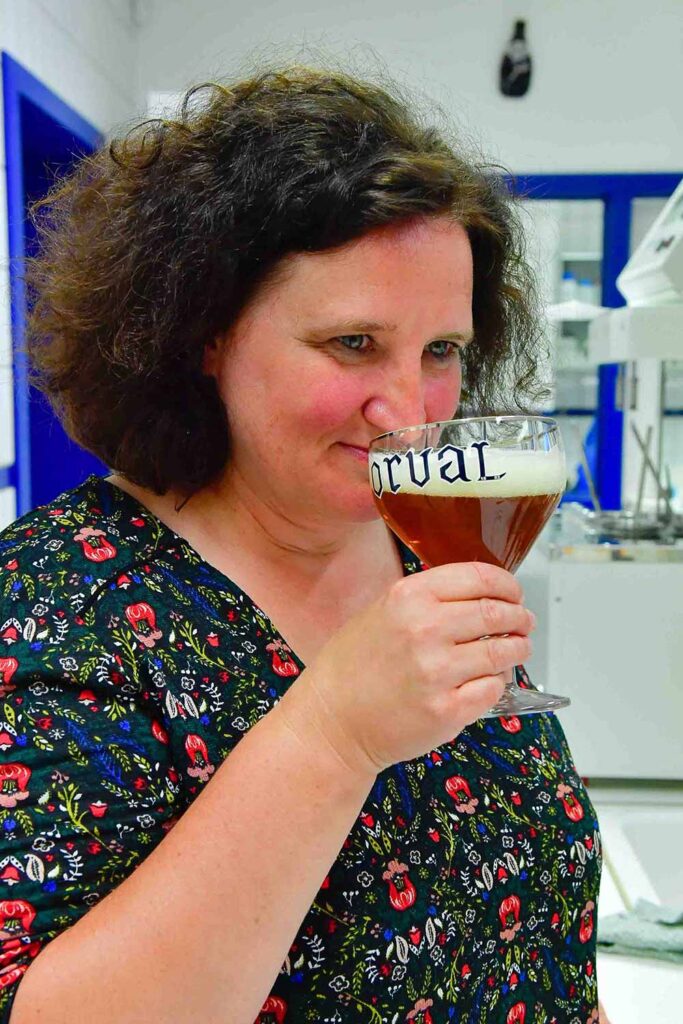
Photography courtesy of Brasserie d’Orval
Pypaert’s love of beer started while studying biochemistry at Institute Meurice (now called High School Lucia Debrouckere. Editor’s Note: In Belgium, high school has a different meaning). The year before graduating, she had to choose a career tract—food factory or brewery.
“For me, brewery was more interesting because I like beer,” she says.
But after leaving school, she says finding a job at a brewery proved difficult. Mainly because they didn’t want women.
“I wrote to [many] different breweries to find a job, and only Orval answered, yes, we are looking for someone,” she recounts.
At the time, Pypaert says she hadn’t even tried an Orval, still a relatively unknown beer in the 1990s.
In fact, Pypaert amusingly admits the first time she drank the beer was with a friend a couple of days before her job interview. “I remember when I had an appointment here for my first job before that, I had to try an Orval,” she says. “I tasted it with a friend of mine who says, ‘Ah, it’s very, very bitter. It’s a very strange beer.’ But I think it was okay. For me, it was good!”
Good thing, too, because Pypaert hasn’t looked back since joining Orval, working her way up the ladder and establishing herself in a male-dominated workplace.
“A few years before [I joined], there was a woman secretary, but when I arrived, there were no women,” shares Pypaert.
Despite the lack of representation, Pypaert says she didn’t have too much trouble fitting in.
“It was not so difficult for me to be accepted as a woman,” she says. “And the director at that moment said that the people were more quiet when there was a woman in the brewery. So, for them, it was good.”
Even under that veiled stereotype, Pypaert thrived, becoming Rock’s second-hand person.
If anything, Pypaert says it has been harder for Orval to fight traditional Belgian drinking perceptions—that because of its high bitterness, this Belgian pale is just a beer for men.
“A lot of women say it’s their favorite beer and not only a man’s beer,” emphasizes Pypaert.
After all, let’s not forget Abbaye d’Orval started because of a woman.
A Quick History of Orval—the Beer and the Monastery
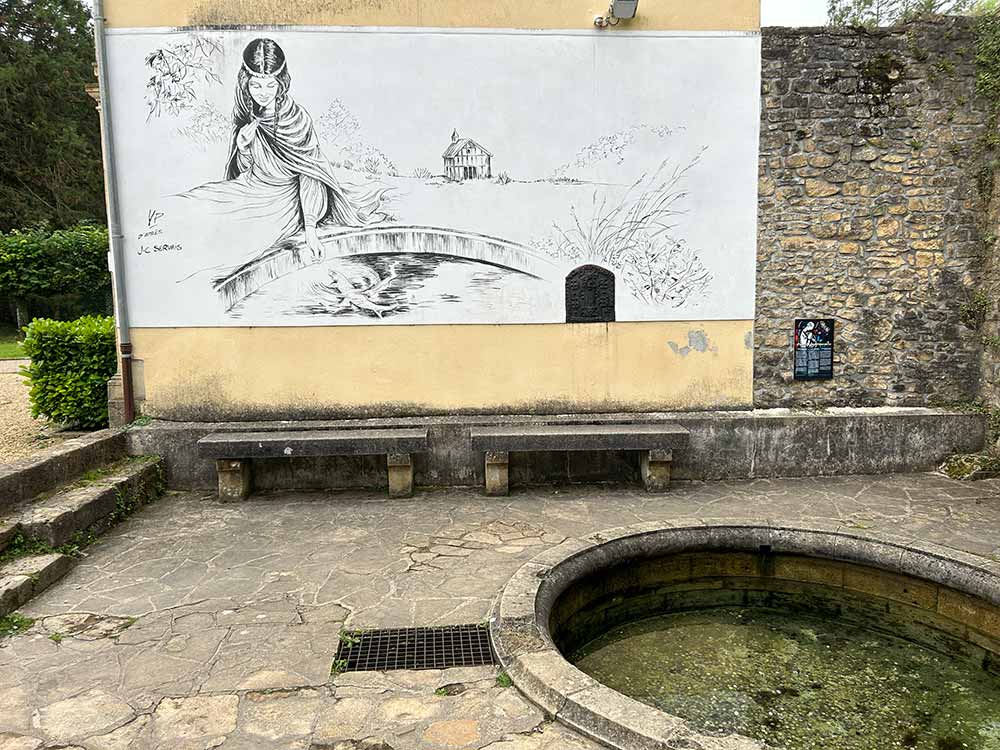
The supposed fountain where Countess Matilde of Tuscany lost her ring and a trout returned it to her | Photography courtesy of Grace Weitz | Hop Culture
We’ve already written about the history of Abbaye d’Orval, so let’s not get too into the weeds here because it’s pretty long and complicated. The TL;DR—Abbaye d’Orval survived quite a few wars and periods of destruction, starting the brewery in 1931 to help pay for repairs.
And contrary to popular belief, the monks of Abbaye d’Orval never actually brewed, always hiring outside the monastery.
“Our brewery has existed since 1931,” writes Brother Xavier, a monk and the managing director of Brasserie d’Orval, in an open letter on their website. “From the outset, our beer production was entrusted to secular employees in the region because the monastic community at the time was primarily occupied by the work on the farm and the cheese making. Unlike at other Trappist breweries, here at Orval, monks have never been directly involved in the production of beer. The number of monks in the community is not directly related to the amount of beer produced, let alone the justification of any trade secret.”
All this translates to Brasserie d’Orval leveraging a thoroughly modern brewing system with stainless steel, fully automated kettles (albeit wrapped in copper to give it that monastery feel).
The recipe for Orval, however, is pretty old school with a twist, developed by German brewer Hans Pappenheimer. According to Orval, Pappenheimer’s assistant, who studied in England, added the dry-hopping step crucial to this beer.
The other signature of Orval, an addition of Brettanomyces, has a slightly murkier origin.
Pypaert says the Brett addition was a “happy contamination,” probably thanks to aging the beer in wood tanks during the ‘40s and ‘50s, but really, “it’s a mystery,” she says.
Whatever the reason, the naturally occurring yeast gives Orval a distinct funkiness. The recipe starts with Pils malt and caramel malt for taste and color. Pypaert says they add Aramis and American Tomahawk on the hot side and German Hallertau and French-Alsace Strisselspalt for that characteristic dry hopping to give Orval that pleasant bitterness, which some initially find off-putting.
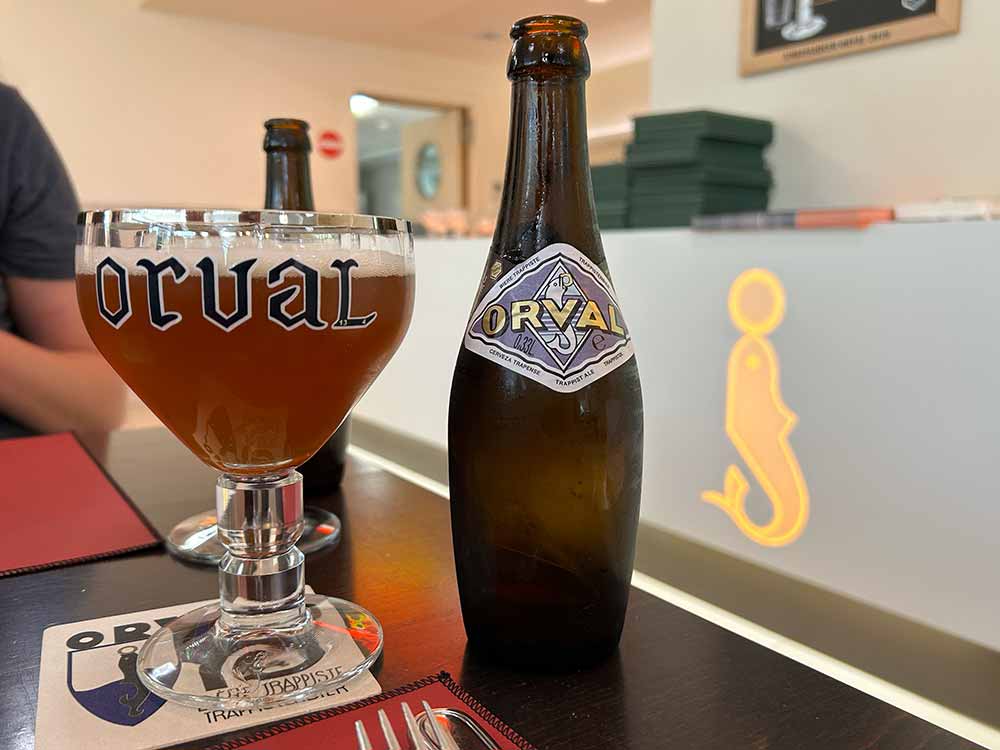
Photography courtesy of Grace Weitz | Hop Culture
“Your first Orval is very difficult,” shares Pypaert. “You have to taste the second or third; after that, you like it very much or not [at all].”
Coming from America, the land of 9,500-plus breweries and countless IPAs, bitterness doesn’t seem strange. But a brewery that only makes one beer? Well, that’s downright insanity.
But that’s Orval—basically brewing only one beer all year long with a recipe Pypaert says changed only a little over the last nine decades. “The beer stays bitter. We have been dry hopping since the beginning, and we continue to use Brettanomyces and the same yeast strains,” she says.
The Monk’s Beer
Well, we have a little secret to share: Orval makes two beers if you count the monk’s beer, Orval Vert, aka Orval Green.
Brewed specifically for the monks at a lower alcohol content (4.5% ABV vs. Orval’s 6.2% ABV), Orval Vert is only offered on draft on-site (although they do bottle the beer for the monks or people who visit on retreats, according to Pypaert).
This beer has gone through many revisions.
“At the beginning, when I was at Orval, to do the small beer, they used the rest of the lagering tank, putting in water and putting that beer into a bottle,” says Pypaert. “It was not so good!”
Pypaert says when they rebuilt the abbey’s on-site restaurant, l’Ange Gardien, they decided to make a better small beer, bumping the alcohol content to 4.5% ABV.
“When we do that, we played with that beer,” says Pypaert. “We changed some times of dry hopping, and we played with dry hopping, so now we have a good recipe.”
Today, the Brett-less beer starts with the same wort as Orval but dry hops with Strisselspalt and Mosaic, switching things up to make the beer more special. “We tried it with Galaxy. … But one year, it was very difficult to find, so our supplier proposed we test Mosaic, and it was a success!” says Pypaert.
A Decade as Brewmaster at Orval
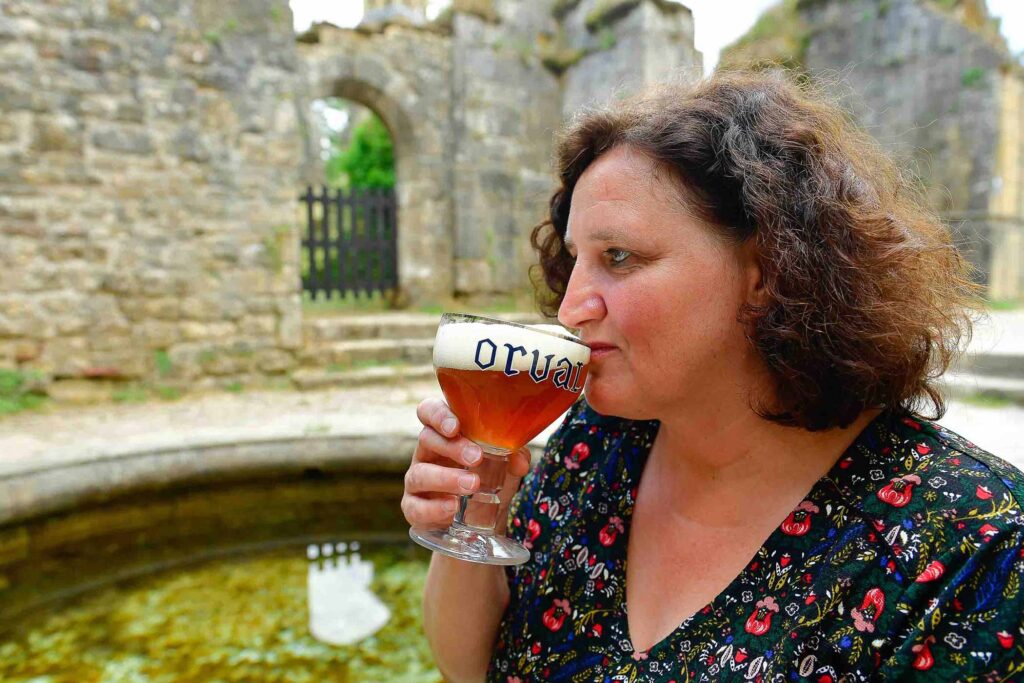
Photography courtesy of Orval
Speaking of success, when you’re brewing massive amounts (80k hectoliters this year, up from 32k in 2000) of just one main beer for distribution, you must dial in your processes.
Something Pypaert learned during her twenty years brewing at former brewmaster Jean-Marie Rock’s side. But he taught her something else, too: brewing with heart and soul.
Both you can see in Pypaert’s tenure over the last ten years.
Since taking over as Orval’s brewmaster in 2013, Pypaert has overseen some significant transformations at the brewery.
For instance, changing the fermentation time of Orval to six days instead of five.
A seemingly minor alteration that encapsulates Pypaert’s approach to brewing.
“[Previously], we brewed Monday and transferred the beer on Saturday, but we wanted to take off the work day on the weekend,” explains Pypaert, noting the team now brews on Tuesday and, on the Monday after, transfers the beer to lagering. “The brewers are happier now that they have a weekend!”
But Pypaert quickly points out that the extra day of fermentation also helps for better attenuation of the beer.
Perhaps Pypaert’s proudest moment has been installing a new fermentation hall and bottling line that, incredibly, cranks through 40,000 bottles an hour.
“That was a lot of work!” she exclaimed, noting the project took five years to complete. “It took a long time to prepare; it was the biggest project of my life.”
From Matilde’s Legend to Anne-Françoise’s Legendary
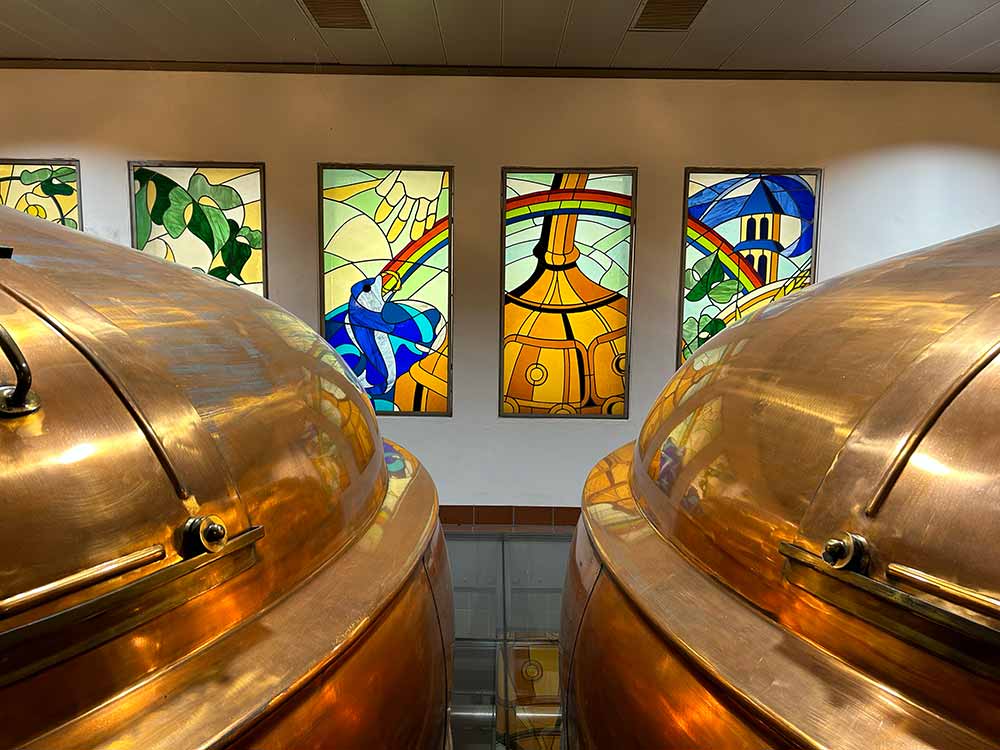
Photography courtesy of Grace Weitz | Hop Culture
Abbaye d’Orval’s centuries-old history precedes itself. Like many other monasteries in Belgium, Orval has been a fighter, surviving multiple revolutions and wars. Constantly rebuilding after periods of contention and destruction.
In fact, walk around the grounds today, and you can still see ruins from the 1789 French Revolution.
And even 891 years later, you can still find the now-iconic symbol of the trout and the ring, splashed across the brewhouse’s stained glass windows, on the hatch to the mash tun, random tiles on the floor, and all of Orval’s bottles.
Starting with one woman and heading into the future with another, Orval has earned its reputation as one of the most iconic beers in the world.

